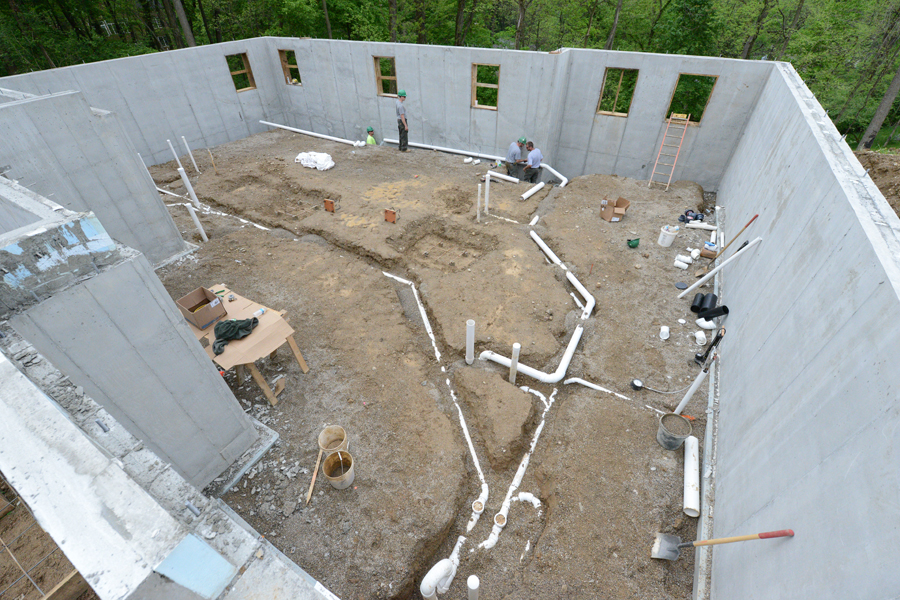Slab home plumbing is a crucial aspect of residential construction that often goes unnoticed until issues arise. As more homeowners opt for slab foundations due to their durability and cost-effectiveness, understanding the plumbing systems within these structures becomes increasingly important. This article aims to delve into the intricacies of slab home plumbing, covering everything from its basic components to common issues and solutions.
The foundation of your home, particularly a slab foundation, plays a significant role in the overall plumbing system. When plumbing problems occur in a slab home, they can lead to costly repairs and significant inconveniences. Therefore, understanding how slab plumbing works and what signs to look out for is essential for every homeowner.
In this article, we will explore the various elements of slab home plumbing, the benefits of slab foundations, potential plumbing problems, and effective maintenance tips. Whether you are a current homeowner or considering purchasing a slab home, this guide will equip you with the knowledge needed to navigate the world of slab plumbing.
Table of Contents
- What is Slab Home Plumbing?
- Components of Slab Home Plumbing
- Benefits of Slab Foundations
- Common Slab Plumbing Issues
- Signs of Plumbing Problems in Slab Homes
- Repairing Slab Plumbing Issues
- Maintenance Tips for Slab Home Plumbing
- Conclusion
What is Slab Home Plumbing?
Slab home plumbing refers to the plumbing systems installed in houses built on a concrete slab foundation. Unlike traditional basements, where plumbing can be accessed from below, slab plumbing is embedded within the concrete, making it less accessible and potentially more challenging to repair.
How Slab Plumbing Works
In slab homes, plumbing lines are typically laid out before the foundation is poured. This includes water supply lines, drain lines, and vent pipes, all of which are crucial for the home’s plumbing system to function properly. Understanding how these systems interact is essential for diagnosing problems.
Components of Slab Home Plumbing
The plumbing system in a slab home consists of various components, each serving a specific purpose. Here are the main parts:
- Water Supply Lines: Carry clean water into the home.
- Drainage Pipes: Remove wastewater from sinks, toilets, and showers.
- Vent Pipes: Allow air into the plumbing system to prevent vacuum locks.
- Connecting Fittings: Join various pipes together, ensuring a tight seal.
Benefits of Slab Foundations
Slab foundations offer several advantages that make them a popular choice among homeowners:
- Cost-Effective: They are generally less expensive to construct than traditional basements.
- Durability: Slab foundations are less susceptible to flooding and damage from pests.
- Energy Efficient: Slabs can help maintain stable indoor temperatures, reducing heating and cooling costs.
Common Slab Plumbing Issues
While slab foundations have their benefits, they also come with a unique set of plumbing challenges. Common issues include:
- Slab Leaks: Occur when water supply lines break or corrode.
- Drainage Issues: Can result from clogs or improper installation.
- Foundation Shifting: Can lead to stress on plumbing lines, causing cracks or breaks.
Signs of Plumbing Problems in Slab Homes
Being able to identify early signs of plumbing issues can save homeowners time and money. Look out for:
- Water Stains: On floors or walls may indicate leaks.
- Unpleasant Odors: Can signify drainage problems or sewer leaks.
- Increased Water Bills: Unexpected spikes may suggest hidden leaks.
Repairing Slab Plumbing Issues
Repairing plumbing issues in slab homes can be complex due to the embedded nature of the pipes. Common methods include:
- Slab Leak Detection: Professional services use specialized equipment to locate leaks.
- Pipe Relining: A less invasive method to repair damaged pipes without excavation.
- Excavation: In severe cases, digging up the slab may be necessary to directly access and repair the plumbing.
Maintenance Tips for Slab Home Plumbing
Preventative maintenance is key to avoiding costly repairs. Here are some effective tips:
- Regular Inspections: Schedule routine plumbing checks to catch issues early.
- Monitor Water Pressure: High water pressure can stress pipes and lead to leaks.
- Keep Gutters Clean: Prevent water from pooling around the foundation, which can cause shifting.
- Install a Water Softener: Reduces mineral buildup that can damage plumbing over time.
Conclusion
Understanding slab home plumbing is essential for any homeowner to maintain their property effectively. By familiarizing yourself with the components of the system, recognizing common issues, and implementing regular maintenance, you can protect your home from costly plumbing problems. Don't hesitate to reach out to professionals for assistance when needed, and always stay informed about your home’s plumbing health.
If you found this article helpful, please leave a comment below, share it with others, and explore more informative articles on our site!
Article Recommendations
- Chuck Drummond Died
- John Krasinski Weight
- Chantel And Pedro
- Nakoa Wolf Manakauapo Namakaeha Momoa
- Who Is Alan Greenspan
- Anime Character Male
- Glorilla Implants
- When Did Confessions Come Out
- Who Is The Song Youre So Vain About
- Jerry Lorenzo Dad



